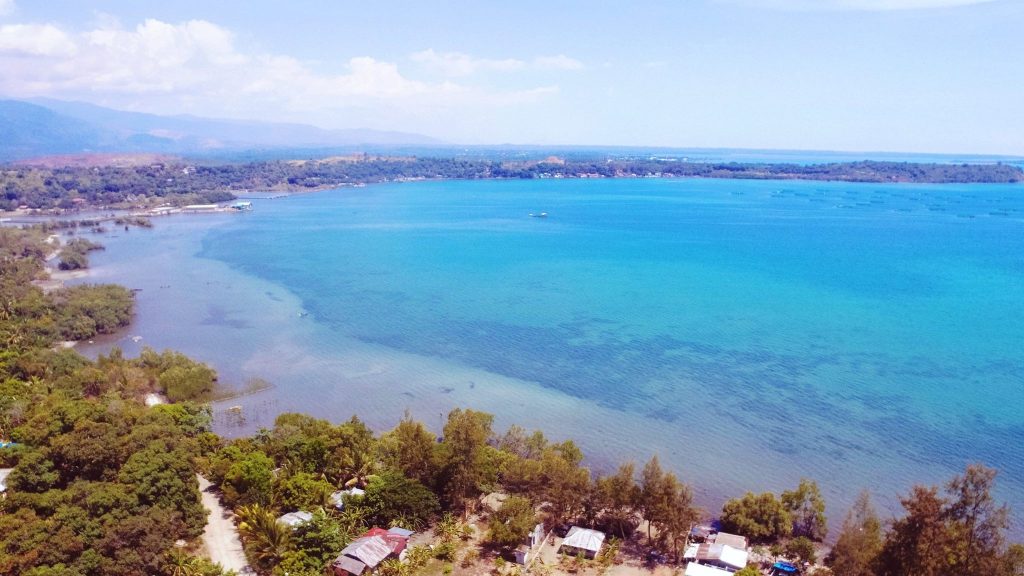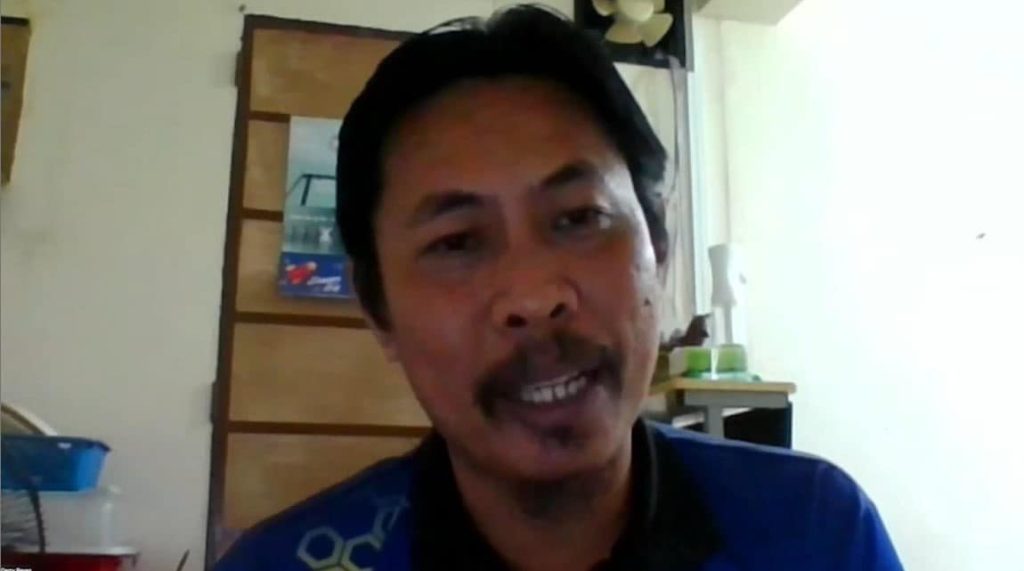
We Filipinos are deeply intertwined with our country’s rich biodiversity and natural resources. From the food on our table to the livelihoods we depend on, our lives are intricately linked to the gifts we receive from nature.
With that, it is our responsibility to be good stewards of the environment. Since the youth, who are called the hope of the land, makes up almost half of the country’s population, the Philippine Information Agency (PIA), together with the Department of Environment and Natural Resources (DENR), target them to be the government’s force multipliers and champions in the crucial advocacy of conserving and preserving biodiversity and managing natural resources.
About 70 students from the Philippine Merchant Marine Academy (PMMA) and Polytechnic College of Botolan in Zambales participated in the fifth leg of the Kilos Kabataan para sa Saribuhay [Biodiversity] forum.
The richness of Philippine flora and fauna
The Philippines stands as one of the world’s 17 megadiverse countries in the world, boasting two-thirds of the planet’s biodiversity. The richness of its flora and fauna positioned it fourth worldwide in terms of bird endemism. It also ranked 5th in mammal endemism; 5th in number of plant species; and 8th in reptile endemism.

DENR Information Officer Guia Mae Dumancas said that in Central Luzon alone, 942,387 hectares of land area are forestlands. Roughly 62 percent or 589,495 hectares of these are forest cover, making the region a rich source of timber and mineral resources.
Aside from timber, premium hardwood species that can be found in Central Luzon include red lauan, tanguile, white lauan, and apitong.
The Masinloc-Oyon Bay Protected Landscape and Seascape—the first and only marine protected area in Central Luzon and the first declared mangrove protected area in Zambales—is home to a rare hybrid mangrove, Rhizopora x lamarckii [hybrid of apiculata (Bakawan lalaki) and R. stylosa (Bakawan batol)].
Mount Tapulao, which is also located in Zambales and is the second largest mountain in Luzon, has 305 species of plants and 141 species of animals. Found in it are seven insectivorous bats, three of which are endemic in the country including the yellow-faced horseshoe bat, large-eared horseshoe bat, and orange-fingered myotis. It is also home to the Tapulao forest mouse (Apomys brownorum) and Tapulao shrew-rat (Rhyncomys tapulao).
In the forest areas of Subic Bay and Bataan, one can find the world’s largest bats including the giant golden crowned flying fox and the large flying fox.
When it comes to freshwater ecosystem, the province also has the Mapanuepe Lake in San Marcelino; Bagsit River in Palauig; Lubong Falls in San Felipe; and Linasin Falls in San Antonio.
Threats to biodiversity
Despite the abundance of flora and fauna in the region and in the province, Dumancas said some of the endemic species here are threatened and are in danger of becoming extinct due to habitat loss, overexploitation, invasive alien species, pollution, and climate change.
“This makes the Philippines as one of the world’s biodiversity hotspots with at least 700 threatened species, thus making it one of the top global conservation areas. The country is top among countries with conservation imperative sites or which has the most protected areas. A total of 248 protected areas are under the expanded national integrated protected area system with 7.76 million hectares,” she said.
Amidst the richness of biodiversity and despite its importance and benefits in our daily lives, the threats also remain relatively high because of the high demand for products from wild poaching and illegal wildlife trade.
“Illegal fishing, timber poaching, kaingin and charcoal-making, forest/grass fire; as well as pollution from chemical waste, mine tailings, hazardous waste, factory discharge and oil spill all add up to the threats. Another threat to our ecosystem is the introduction of invasive and exotic species,” Dumancas noted.

Palawan Daily News writer Gerardo Reyes Jr., who is also an environmental journalist, reiterated the serious threats to the environment including deforestation.
“A huge percentage of our forests are destroyed due to various illegal activities. Aside from this, human activities brought about by industrialization also impacts nature. Because of emissions like carbon dioxide, carbon monoxide, and other greenhouse gases, the air quality changes and becomes a threat to our health,” Reyes said.
He also pointed out big factories that do not have wastewater treatment facilities as one of the culprits in the degradation of the ecosystem. These companies drain their untreated wastewater in bodies of water, killing species that live in water. Rapid urbanization, he said, has also become a challenge because this contributes to pollution, as well as irresponsible extraction and utilization.
Taking on the challenge as agents of change
Given these challenges, Reyes encouraged the youth to do their share in order to effect real change in this crucial advocacy of managing and preserving the environment.
Since the youth has the greatest energy and strongest voice, and are active in a lot of social advocacies, the government is counting on them to contribute to various causes, including those that are environment-related.
With this, Reyes encouraged the youth to speak up and use their voice to amplify the call towards biodiversity conservation and management.
“We have the so-called citizen science. This is an initiative to involve the common people in fueling science research. It can prove highly useful as it helps scientists and researchers in gathering public knowledge and insights about conservation and biodiversity among common people. The youth, especially the students can contribute a lot to these researches,” he said.
The environmental journalist added that the youth can also be catalysts of change by speaking up about the environment with their respective networks and creating organizations that would serve as watchdogs who would call on the attention of those who do harm to nature.
In response, Polytechnic College of Botolan Supreme Student Council President Alexis Angel Nunag stressed that forums like this one are a great opportunity for the youth to be aware of the significance of their role in fostering the sense of environmental responsibility and advocating for biodiversity conservation and environmental sustainability.
“I hope that what we have learned today will serve as a wake-up call that now is the time to act to amplify the hushed voices in our environment. On behalf of my fellow youth, we are giving our utmost support to this program, this partnership and future endeavors; and looking forward to make use the inspiring discussions and valuable insights that we have acquired in this forum. Let us make a meaningful difference and show that I care, you care, and we care,” she said.
For his part, PMMA The Galleon Student Publication writer 1CL Marc John Castañeto said that the cadets of the PMMA, as future maritime leaders, bear a special obligation to safeguard and maintain our marine ecosystem.
“We are well positioned to take on leadership positions, combining knowledge and action to safeguard communities and beyond. By incorporating conservation initiatives within the academy, such as the Pawikan Week Conservation and several coastal cleanup drives and inter-maritime activities, we can set a good example and show that economic growth and environmental care are not mutually exclusive,” he said.
He also vowed on behalf of his fellow cadets that they will be diligent caretakers of the natural legacy, ensuring a sustainable and prosperous future towards the beauty and life of the planet.
“Unsustainable practices and climate change endangered nature’s delicate balance, jeopardizing the very resources that sustain our livelihood and communities. Therefore, we commit that our active participation is about more than just conserving the present. It is about creating a sustainable future in which the environment and mankind may co-exist peacefully,” Castañeto pressed.
It really takes a whole of nation approach to protect the biodiversity, and the youth has a very important role as competent and passionate environmental advocates and champions.
Let us all remember that no action is small when it comes to environmental conservation. Every action is important, and the youth can do even simple steps to fulfill their role as good stewards of nature. These include planting trees and mangroves; participating in river and coastal cleanup and rehabilitation; conserving energy; saving water; practicing the reduce, reuse and recycle your wastes; and sharing knowledge on environmental issues and concerns with others.
We all benefit from the country’s rich biodiversity so each one has a duty to take care of it. Conservation works best when people and nature can thrive together. (CLJD/MJSC, PIA Region 3-Zambales)